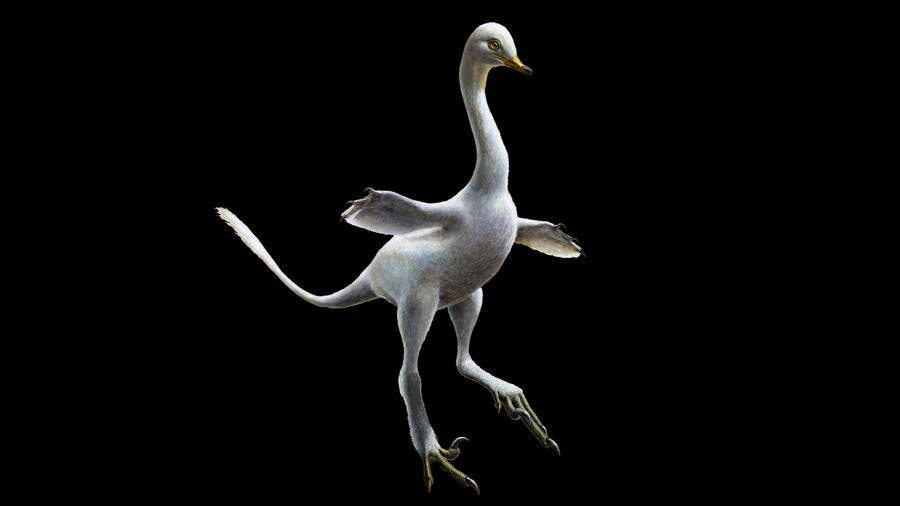Paleontologists have discovered a new dinosaur species whose appearance is so strange, they could hardly believe it was real. The 75-million-year-old dinosaur used to feature a bizarre combination of body parts. it had the snout and neck of a goose but the claws of a velociraptor. Such contrast between grace and viciousness has rarely if ever been seen in the same dinosaur.
The creature is called Halszkaraptor escuillie in honor of famed Polish paleontologist Halszka Osmólska, who was preoccupied with studying many Mongolian dinosaurs. It was in Mongolia — in Ukhaa Tolgod, to be more precise — that this strange duck-like dinosaur was unearthed.
Duck, ostrich, swan?! Hmm…
This was one of the smallest known dinosaurs, as Halszkaraptor was no bigger than a goose. It mainly ate fish and crustaceans but likely chowed on lizards and insects too, according to lead author Andrea Cau of the Geological Museum Capellini in Bologna.
Cau and colleagues used multi-resolution, X-ray microtomography to study the fossils in their most intimate details, both on the outside and the inside, without risking any damage to these invaluable fossils. The fossil is still partly embeded in rock.
“The first time I saw the fossil I was shocked,” Cau said. “It was so unexpected and bizarre.”
Like today’s ducks, Halszkaraptor must have spent most of its life in water. It had a somewhat bird-like bill that was still not a true beak. The long neck likely enabled Halszkaraptor to dart out and grab prey close to the water’s surface. It had curved sickle-like claw on the second toe of the foot but which wasn’t particularly long and likely didn’t proove much use in hunting. To top things off, this man-bear-pig dinosaur had the teeth of a croc.
Researchers say that this odd-looking dinosaur used its killer claws to tear its prey to shreds. At the same time, it likely was preyed upon itself by the infamous velociraptor with which it was a contemporary and part of the same dromaeosauridae group. The group included feathered theropods which are closely related to birds but aren’t their ancestors.
Besides its staggering appearance, Halszkaraptor is important because it proves that raptorial dinosaurs not only ran and flew but also swam. If anything it shows just how amazingly diverse dinosaurs were.











